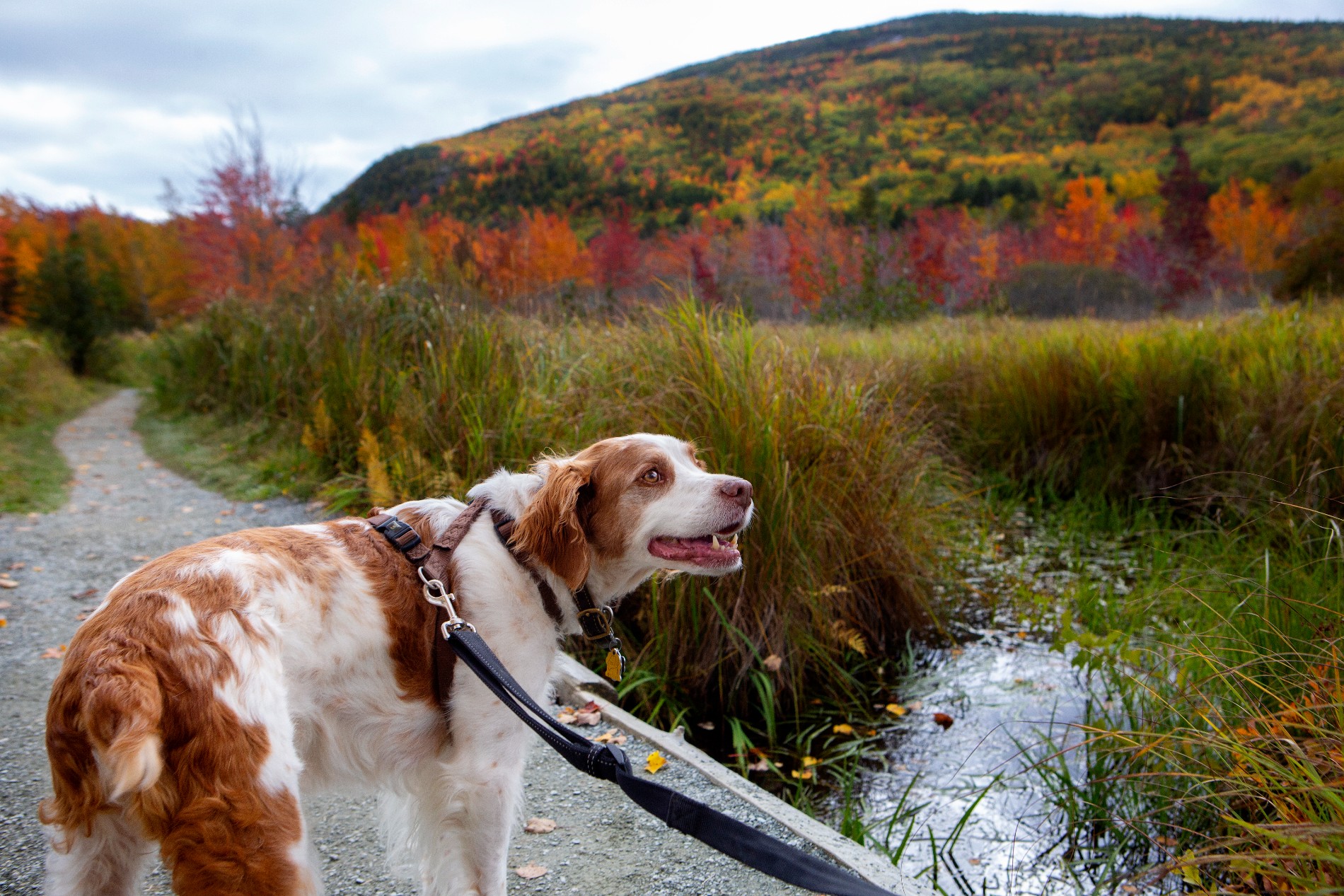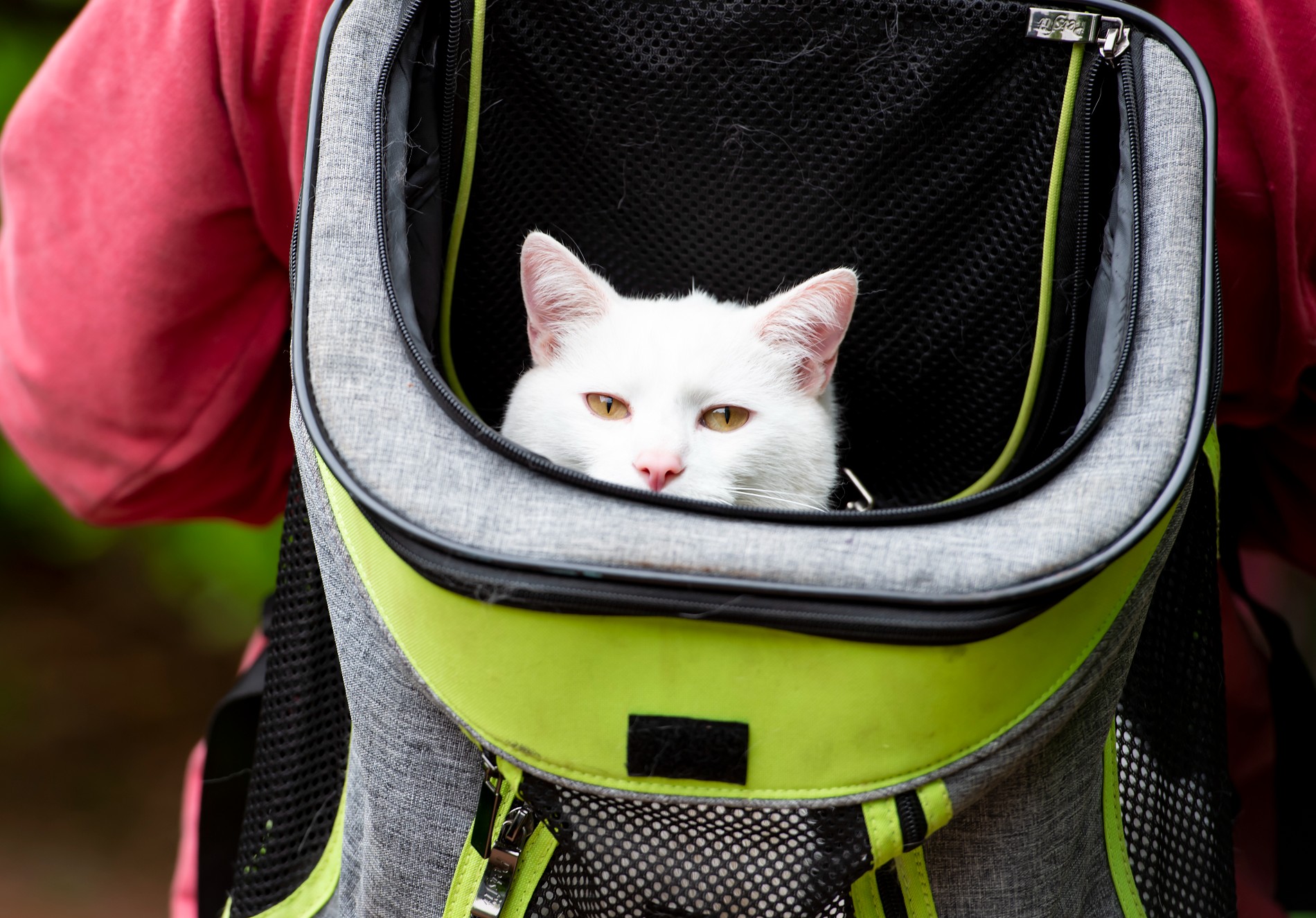Pets in the Park
Exploring Pet-Friendly Policies in the Park.
October 26th, 2024
Exploring Pet-Friendly Policies in the Park.
October 26th, 2024
BY ELLA SKOLFIELD
Acadia National Park’s pet policy is rare within the National Park Service. Only 34% of national parks in the United States allow dogs to travel on more than five trails. Acadia only limits pet access at specific lakes, ponds, buildings, and trails that feature iron rungs and ladders.
The pet policy outlines some additional requirements: Pet owners must collect and dispose properly of animal waste in designated trash receptacles and they should not leave their pets unattended, including at campsites or in cars. Federal law also requires that all pets must be kept on a leash no longer than 6 feet at all times
There is a great deal that Acadia does not know about how visitors and their pets enjoy the park, and some visitors, locals, and resource managers are increasingly concerned about pet policy compliance.
Friends of Acadia’s Recreation Technicians wanted to better understand visitation characteristics related to visitors and their pets. The park and Friends of Acadia carried out an in-the-field study this summer to try and answer questions such as: What portion of visitors bring their pets to Acadia? Are pet owners choosing Acadia because of the permissive dog policy? What transportation do visitors with dogs use to travel around
the park?
These questions and others were asked to better understand visitors and their furry friends.

Champ, an 11-year-old American Brittany, is seen during peak foliage near the Jesup Trail. (Photo by Ashley L. Conti/Friends of Acadia)
We formulated and conducted a survey with a variety of questions, prompting respondents to share their experience bringing pets to Acadia, including how they traveled with their pets and where the pets went. There were 240 responses to the survey across 11 locations from June to August 2024.
Observational data was collected in addition to surveys to gather more general information on dogs and if their owners were complying with Acadia’s pet policy. We wanted to see if the dogs were properly leashed, if any dog waste was found at the location, and what percentage of visitation came from dogs.

Park visitors Taylor Thompson and Russell Bloom wrap themselves and their dog Chloe in a blanket to stay warm while waiting for the sunrise on top of Cadillac mountain. (Photo by Will Newton/Friends of Acadia)
We found that 68% of the people who brought dogs to Acadia chose this park specifically because of the pet policy. The Bark Ranger program is a fun way to ensure pet owners are properly visiting a National Park with their pet.
B.A.R.K stands for Bag your poop, Always wear a leash, Respect wildlife, and Know where to go. Respondents from the survey indicated that 30% of dog owners knew about this program, and only 5% had their dog(s) sworn in as Bark Rangers. Increasing education of this program may help with policy compliance.
Another element of the visitor experience in Acadia is getting around via the fare-free bus, the Island Explorer. This service helps limit vehicle congestion from June to October each year. In this study, 11% of respondents used the Island Explorer with their dog.
Off-leash dogs were observed considerably more on mountains than in congested areas in the park. We also found
that dog waste was more often abandoned at the trailheads of less trafficked hikes. For example, seven waste bags were observed at the Flying Mountain trailhead over four visits.
Visitors might have been more likely to disobey the rules and abandon dog waste at less-visited trailheads because no one is watching. Since mountain trails see less traffic, visitors may feel less concern and peer pressure for compliance.

Larry, a cat, rides in a backpack on his owner Ashton Garner near the Jordan Pond House. (Photo by Will Newton/Friends of Acadia)
Gaining a further understanding of dog visitation within Acadia helps park staff educate dog owners in the future. If owners are educated about the Island Explorer bus and the Bark Ranger program, we can decrease vehicle congestion and increase policy compliance, encouraging a better visitor experience for everyone.
In addition, it is valuable for visitors and staff to know the high and low use areas that dogs frequent. Visitors opting for fewer dog interactions will know where to go, and staff wishing to educate on these policies can visit highly trafficked spots.
ELLA SKOLFIELD is a seasonal Recreation Technician with Friends of Acadia.
To have the best visitor experience for you, your pet, and others, make sure your pet's leash is six feet long or less, ensure pet waste is collected and disposed of properly, and know where pets are allowed to go in Acadia.
Learn More